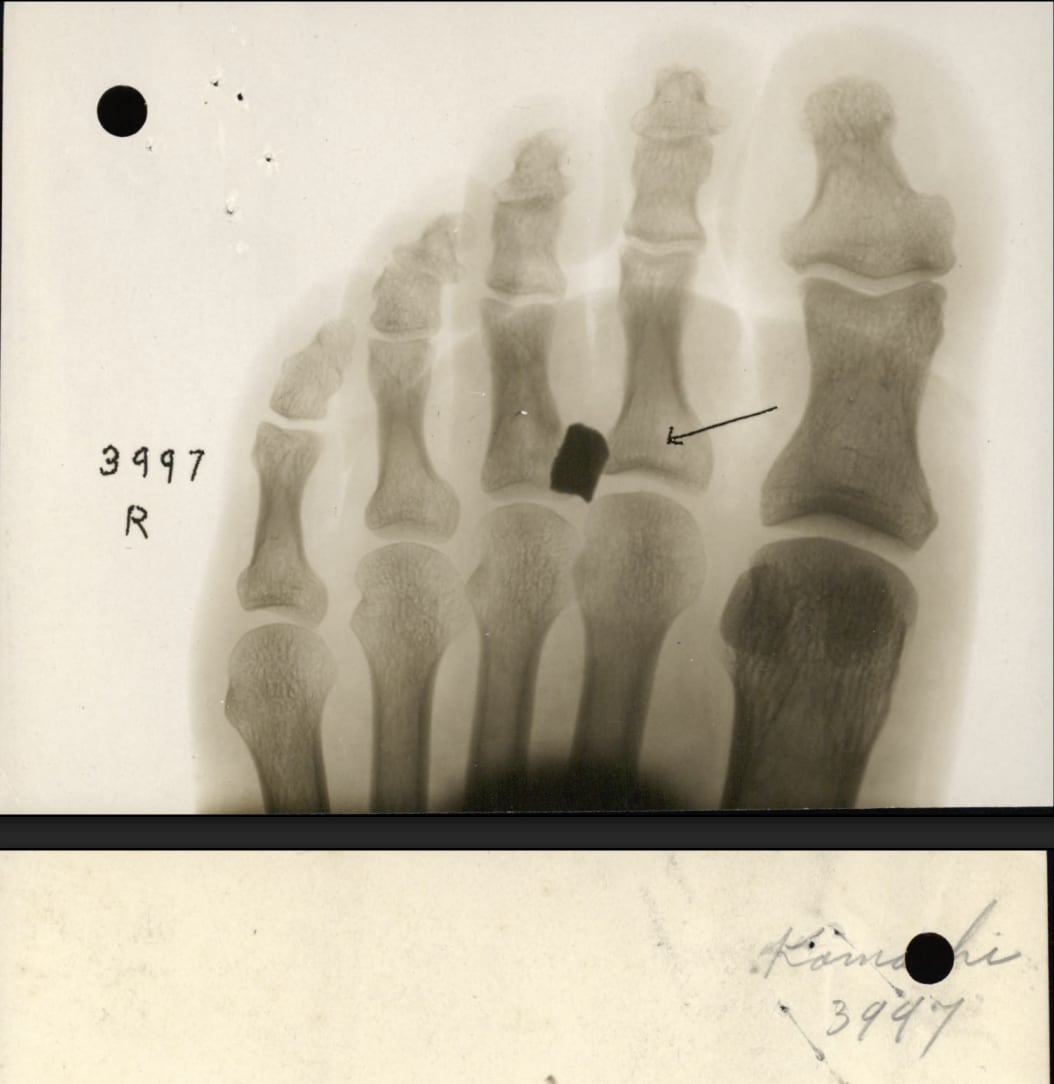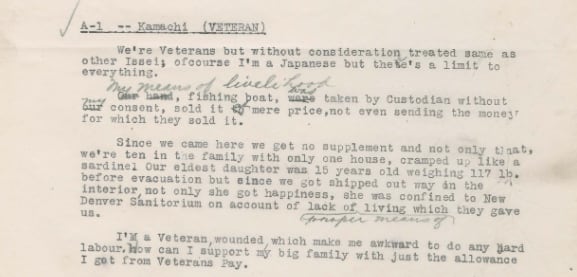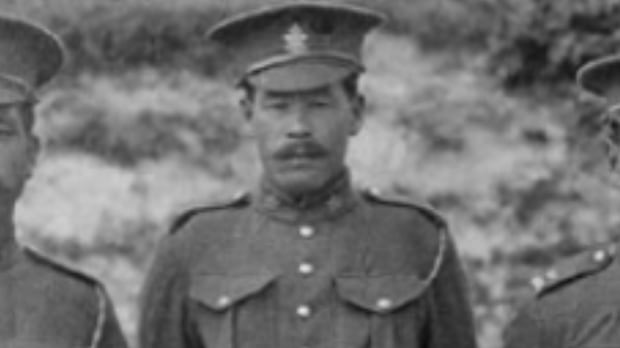For the first time the faces of Japanese Canadian veterans who fought in the First World War are on display on the streets of Vancouver after a century largely unrecognized.
A community historian spent more than 15 years digging through archives, tracking down descendants and uncovering heroic acts to bring this group of forgotten soldiers’ stories to life and push for the recognition she says they deserve.
“These were young men who gave their whole lives and no one remembers them,” Debbie Jiang told CBC News.
“I feel like I’m bringing back to life that person and their names that would otherwise be unknown.”
Jiang calls it a “travesty” that a dark chapter in Canadian history overshadowed their service and kept their stories hidden not only from the public, but in many cases their families, too.
During the Second World War, Canada labelled all Japanese Canadians including veterans “enemy aliens” and forced thousands in B.C. into internment camps, seized their property and sold their belongings.
Kelly Shibata says it wasn’t until he spoke to Jiang that he started learning more details about his grandfather’s remarkable military career.
“That is the mystery of all of it — we had virtually no information about his time in the military,” Shibata said.
His grandfather, retired private Otoji Kamachi, was part of a distinct group of Japanese Canadian soldiers who enlisted during the First World War in Canada’s military.
The Japanese Canadian soldiers who signed up weren’t the typical 18- to 20-year-old at that time. Jiang said many of them were in their 30s and 40s and some already decorated veterans.
Despite facing systemic racism and being denied the right to vote in 1895, they travelled to Alberta — the only province where they could enlist — and fought on the front lines.
Jiang said many, including Kamachi, were on a mission to fight for the right to vote.
“They had wives and children, and yet they risked their lives to make a point and fight for Canada so they could bring home the right to vote for their community,” Jiang said.
Jiang said over time the Japanese Canadian troops won over comrades who felt they were a liability because some didn’t speak English.
“The Germans were afraid of them because they were fierce fighters. Many had fought in the Russo-Japanese War of 1905,” Jiang said.
“They sacrificed themselves, to no end.”
She says military records show Kamachi had the distinction of serving in the 52nd Battalion which was involved in the Vimy Ridge offensive — celebrated as a victory for Canadian troops in northern France in 1917.
He went on to fight at the Battle of Hill 70, Battle of Ypres and the Battle of Passchendaele, known for horrific conditions and hundreds of thousands of casualties, Jiang said.
Almost 200 Japanese Canadians served during the First World War, she said, with roughly a dozen receiving awards for their acts of bravery and more than 50 losing their lives.
Kamachi was among those who survived, but was injured by multiple gunshot wounds and spent months in hospital at the end of 1917, according to his military records.

Despite fighting for Canada, Kamachi was among the 22,000 Japanese Canadians the federal government uprooted from their homes, separated from their families and sent away to camps during the Second World War.
After the Japanese attack on the U.S. naval base in Pearl Harbor, Hawaii, Canada and the U.S. considered people of Japanese origin a threat.
Kamachi was sent to the Popoff internment camp in Slocan Valley, which was dismantled in 1946 after the war ended. Records show the government sold his boat and 15 acres of land valued at $750 for $86.
“My means of livelihood, fishing boat, was taken by Custodians without my consent, sold it at mere price, not even sending the money for which they sold it,” Kamachi said while in an internment camp in 1942.
The Nikkei National Museum posted a collection of statements online from the interment camp where Kamachi described that his family of 10 was “cramped up like a sardine” in one house. He said he’s a wounded veteran which makes it “awkward to do any hard labour” to support his family.

Despite everything he endured, Kamachi rebuilt his life as a tomato and strawberry farmer in B.C. He raised his eight children with his wife Yukie Koreeda.
Jiang found an old newspaper clipping about a Japanese farmer who named his variety of strawberry the “British sovereign” that she believes could be Kamachi.
Kamachi lived to see the day Japanese Canadians were granted the federal right to vote in 1948.
But he wasn’t alive to see Prime Minister Brian Mulroney in 1988 deliver a formal apology and compensation package to the survivors and their families for the injustices they faced.
When Kamachi died in 1957 his casket was draped with a Union Jack.
His family believes he was proud of his time in uniform because he wore his military participation pin at key moments throughout his life.

A black-and-white image of Kamachi from his time in uniform is now blown up on an eight-foot banner on the street in downtown Vancouver with 20 other Japanese Canadian veterans from the First and Second World War.
Only a small number of Japanese Canadian men served during the Second World War. They were banned from joining Canada’s military until 1945 after pressure from allies.
Britain and Australia urgently called Canada to provide Japanese-speaking translators and interpreters to question Japanese prisoners of war and translate documents. Jiang says some served in South Asia to help with war crime investigations in non-combat roles.
Shibata says learning about his grandfather and paying tribute to him with a banner has brought his family closer together.
“It’s great to be able to honour him in that way and recognize what he did,” Shibata said. “It was quite silent in the family for years and years and it’s nice to bring that out.”
Jiang hopes the images send a powerful message to the public.
“I want them to be remembered,” she said. “I want people to be able to look up and say their names.”







